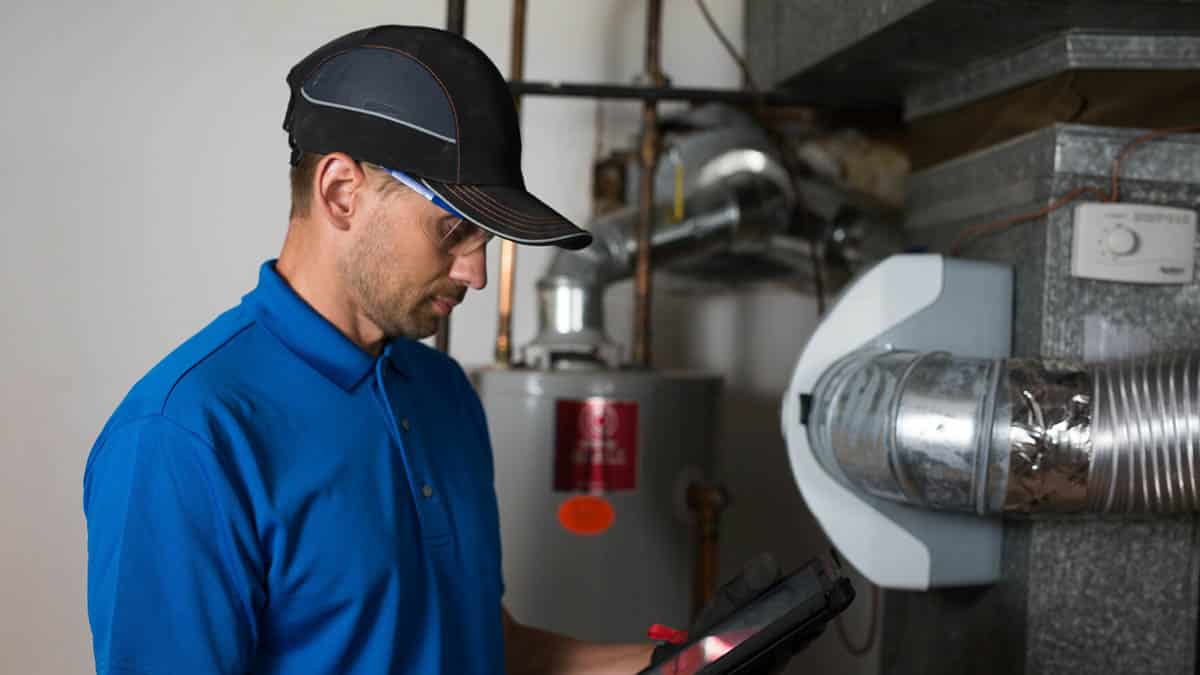When’s the Best Time to Replace My Furnace?

How can you tell that your HVAC system is on its way out? Before you can start looking at replacement options, you need to know if it’s actually a good time to replace your current model.
Although a furnace has a longer lifespan than an air conditioner, it’s may also a good idea to time your air conditioner replacement with your furnace replacement to save money and make sure the equipment is properly matched.
Signs to Replace Your Furnace
Look out for the signs that your furnace needs to be replaced. If the furnace is less effective or less efficient than you would like, a professional contractor can help you decide the best course of action.
Today’s energy efficient heating and cooling equipment save consumers money while providing increased and dependable comfort. The newer systems available are much more energy efficient than even the top-of-the-line models available 10 years ago.
While you will have to pay the purchase and installation cost up front, you will immediately begin to save substantial amounts on your monthly cooling bills. For more information about replacing your furnace, contact Crawford.
Call a professional HVAC technician if you notice the following about your furnace:
10-year-old heat pump
If your heat pump is 10 years old, it’s time for it to retire. Furnaces, on the other hand, last nearly twice as long. When you upgrade your unit, you’re actually saving money due to the increase in energy efficiency — up to 20 percent. Install a unit with an ENERGY STAR label for best results.
15-year-old furnace
The average lifespan of a furnace is 15 to 30 years. Technology has advanced so quickly, if your furnace is 15 years old, consider looking at newer, high-efficiency models. You don’t have to wait for your furnace to be nonfunctional before you look into replacement options. Again, whenever you decide to upgrade, an ENERGY STAR-qualified furnace is the way to go.
Energy bills up, satisfaction down
When you are paying more money for less satisfactory comfort, your heating system is failing! Not only are you probably experiencing frequent repairs to keep it running, but the unit is using a lot more energy when it is running. If your heating and cooling equipment has become less dependable, less efficient, and yet more expensive and wasteful when it comes to money and energy, look into high-efficiency models. It might be time.
Feeling the humidity
Leaky ductwork can cause the air to be too dry during winter months and too humid during summer months. HVAC equipment that is inadequate or not functioning properly can also cause this problem. Have a professional check it out. It might be time for a furnace and air conditioner replacement, or there might be the need for duct repair service.
Things to Consider When Replacing or Upgrading Your Furnace
Energy Efficiency
The newer the model, the more efficient it will be. Today’s models are built to lower your energy waste and lower your utility bill. Energy savings over time is the greatest advantage of replacing your outdated or inefficient furnace. Understand what type of models will be the highest efficiency. Look for the Energy Star label, and ask an HVAC professional to point you to the most “green” units.
According to the Energy Department, it is a system’s annual fuel utilization efficiency (AFUE) that lets you know its efficiency. Use the AFUE to compare the efficiency and equipment features of systems you are interested in.
Old, low-efficiency heating systems:
- Natural draft that creates a flow of combustion gases
- Continuous pilot light
- Heavy heat exchanger
- 56% to 70% AFUE
Mid-efficiency heating systems:
- Exhaust fan controls the flow of combustion air and combustion gases more precisely
- Electronic ignition (no pilot light)
- Compact size and lighter weight to reduce cycling losses
- Small-diameter flue pipe
- 80% to 83% AFUE
High-efficiency heating systems:
- Condensing flue gases in a second heat exchanger for extra efficiency
- Sealed combustion
- 90% to 98.5% AFUE
Source: energy.gov
Fuel
Depending on where you live, you may have limited access to heating fuels like oil or natural gas. Speak with a local HVAC contractor to discuss your furnace fuel options.
Size
One thing to keep in mind when replacing your heating system is size. The larger your home, the more heating power you’ll need. Proper sizing is essential for getting the heat and comfort you need for your living space.
Unfortunately, many HVAC systems are improperly sized, which can lead to higher installation costs, comfort and efficiency problems. Make sure you work with a licensed and certified HVAC technician when sizing a new unit.
You may be able to save money and energy on a smaller-sized unit by making insulation and air sealing improvement around the home. Since HVAC sizing takes energy leaks into consideration, by sealing them, you might be able to save money on a smaller system.
Maintenance
After a certain point, repairs will become so costly that it will not be worth it to keep your current furnace. Repair and replacement are natural course for all important systems in your home. As technology advances or the comfort needs of your home or family alter, your heating and cooling equipment should be designed to keep up the times and with your needs.
When you decide on your new furnace, keep in mind that bi-annual maintenance, in fall and spring, is strongly recommended by all HVAC professionals. Companies, like Crawford, offer annual furnace inspection and maintenance services.
Kept up annually, your system will last as long as it is built to, and you won’t be needing to replace the furnace again for a very long time, between 15 and 30 years down the line. Annual maintenance upkeeps your investment, but it is an additional yearly cost and responsibility to consider.
Call Crawford
Don’t pay more for more energy than you need. You can achieve modern, dependable comfort all year round with high-efficiency heating and cooling equipment. If there are signs that you should look into new units, reach out to a professional contractor.
An HVAC professional can answer all of your questions, inspect your current system and offer advice and solutions for how to achieve the most energy-efficient and cost-effective home.
Contact Crawford with any and all of your furnace replacement questions.

